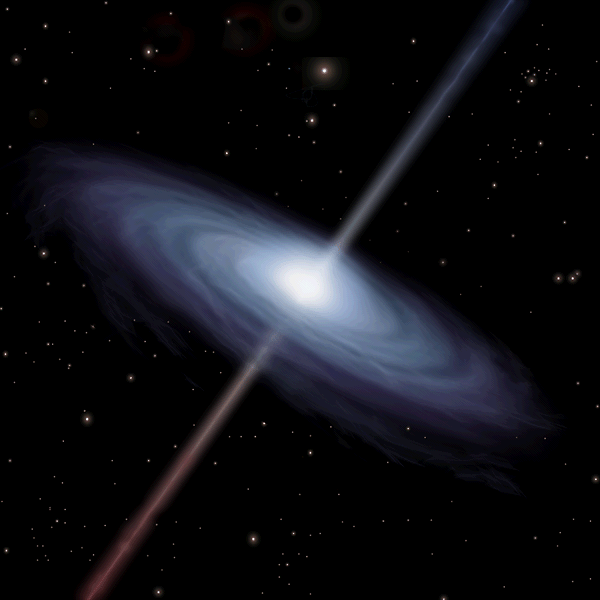New Telescope Begins Hunt for Black Holes
Friday, August 3rd, 2012August 3, 2012
Scientists have gained a powerful new tool for finding and studying black holes and other violent objects that give off high-energy X rays–NASA’s Nuclear Spectroscopic Telescope Array (NuSTAR) space observatory. Black holes are regions of space whose gravitational force is so strong that nothing can escape from them. Because black holes trap even light, astronomers cannot see them directly.
Black holes “are sort of the Las Vegas of the universe,” said one scientist. “What happens in a black hole stays inside of a black hole. But on the outskirts of them, that is where there’s tremendous action.” That action occurs when a cloud of gas and dust–or even a star–gets close enough to the black hole to be captured and “eaten.” In the process, the material swirling into the black hole gets so hot that it glows and emits invisible high-energy X rays–the kind used in medicine to image the inside of the body and teeth. This radiation can reveal not only the location of a black hole but also its size. Scientists also plan to study mysterious black hole “burps,” which may be X rays that shoot from black hole if too much material is pulled in at once.

Galaxies appear in much sharper focus in a computer simulation showing NuSTAR’s view of an area of deep space (lower right), compared with an image taken by the European Space Agency’s INTEGRAL satellite (upper left). NuSTAR’s ability to capture high-energy X rays will enable scientists to find individual black holes currently hidden by clouds of dust. (ESA/NASA/JPL-Caltech)
Other targets of the NuSTAR observatory will be supernovae–massive exploding stars that create black holes–and active galaxies–galaxies with supermassive black holes in their nuclei (cores) that give off vast amounts of radiation. Scientists also plan to study the sun‘s atmosphere, which is much hotter than the surface below.
Since the June 14 launch of the $170-million space telescope, NuSTAR’s scientists have been calibrating its instruments and taking test images. Because NuSTAR has more than 100 mirrors for reflecting X rays, it will be able to produce images 10 times as sharp as those from current X-ray telescopes, even the orbiting Chandra X-ray Observatory.
Additional World Book articles:




